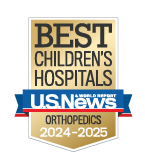Core Exercises and Conditioning for Adolescent Athletes

Everyone talks about “core” as an important building block to injury treatment, prevention and performance enhancement for athletes, but what is the core?
If you think of your torso as a cylinder, the core is the innermost musculature that stabilizes the spine. These muscles consist of the:
-
diaphragm, the muscle that helps you breathe
-
pelvic floor, the muscle that helps you control bladder and bowel functions
-
deepest layer of abdominal muscles which are right over your organs
-
smallest back muscles closest to your spine.
The core’s main job is to efficiently transfer forces from your extremities in a stable manner.
How lack of core development leads to injury
The core is not a “more is better” muscle. This means while doing simple tasks like sitting or walking, contracting your core a lot is not beneficial, and may even be harmful. Core activation should directly relate to the difficulty of the task. Since the core’s role is to appropriately transfer forces, then you should only use a little core for a simple task, like picking up a piece of paper from a table, and should use a lot more while doing a handstand on a balance beam. Training the body to modulate the core, greatly increases the efficiency of the system and enhances athletic performance.
How athletes should train the core
What the core does not do is flex the spine (i.e., crunches or sit-ups) nor extend the spine (superman or back lifts). The more superficial trunk system that is important for sport, but is not actually the core, is responsible for these activities. Additionally, there are other muscle groups that are not core, but are complementary and necessary for athletic performance, as well as everyday activities. These include the glutes, hip muscles, neck/shoulder blade musculature and of course leg muscles.
One of the most important things you can do as an athlete is work on the whole-body integration so that efficiency of movement is your main goal. This allows for agility, strength, flexibility and speed to appropriately maximize sport performance. Working with a qualified rehabilitative or fitness professional for proper core integration is key!

